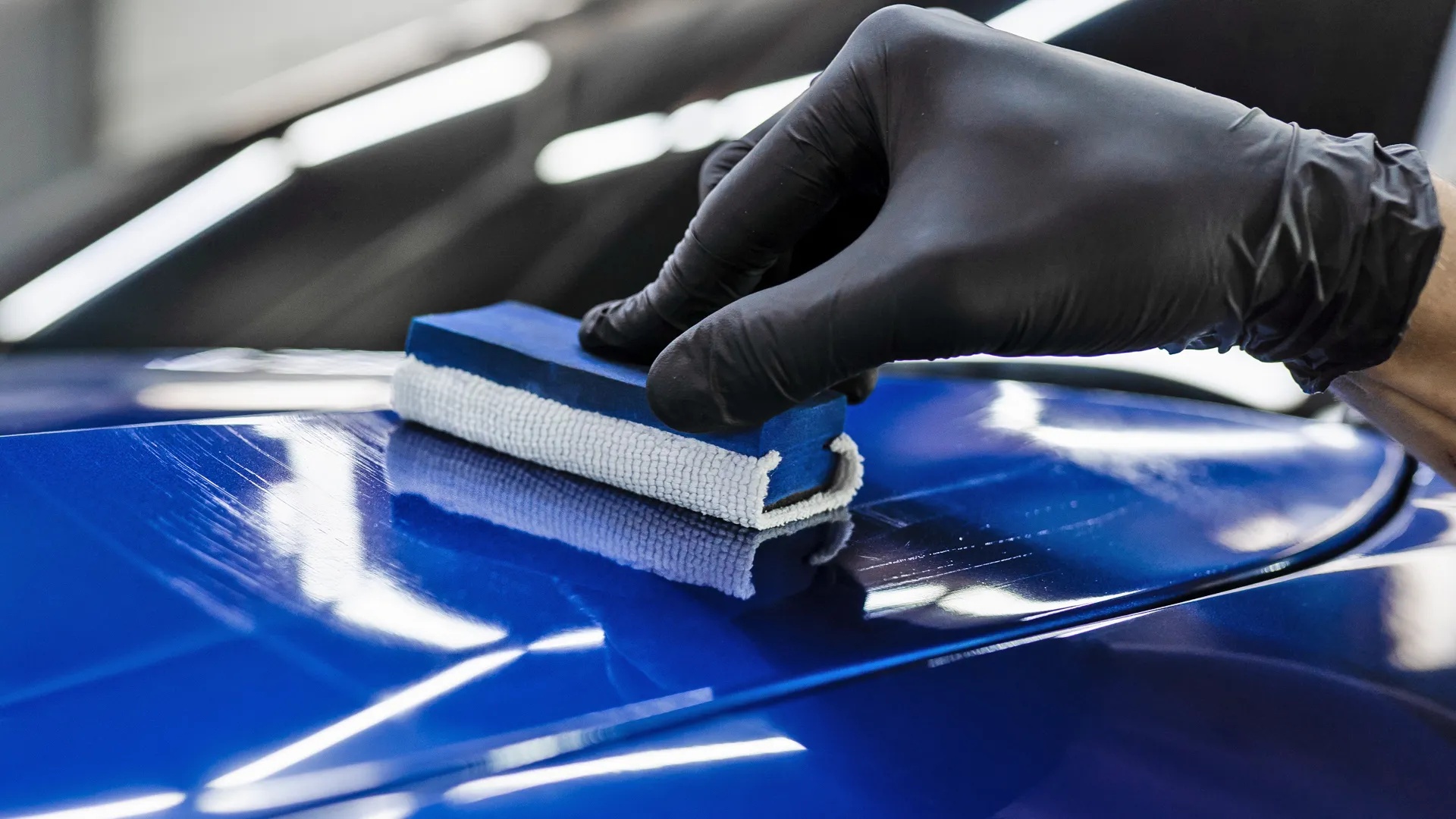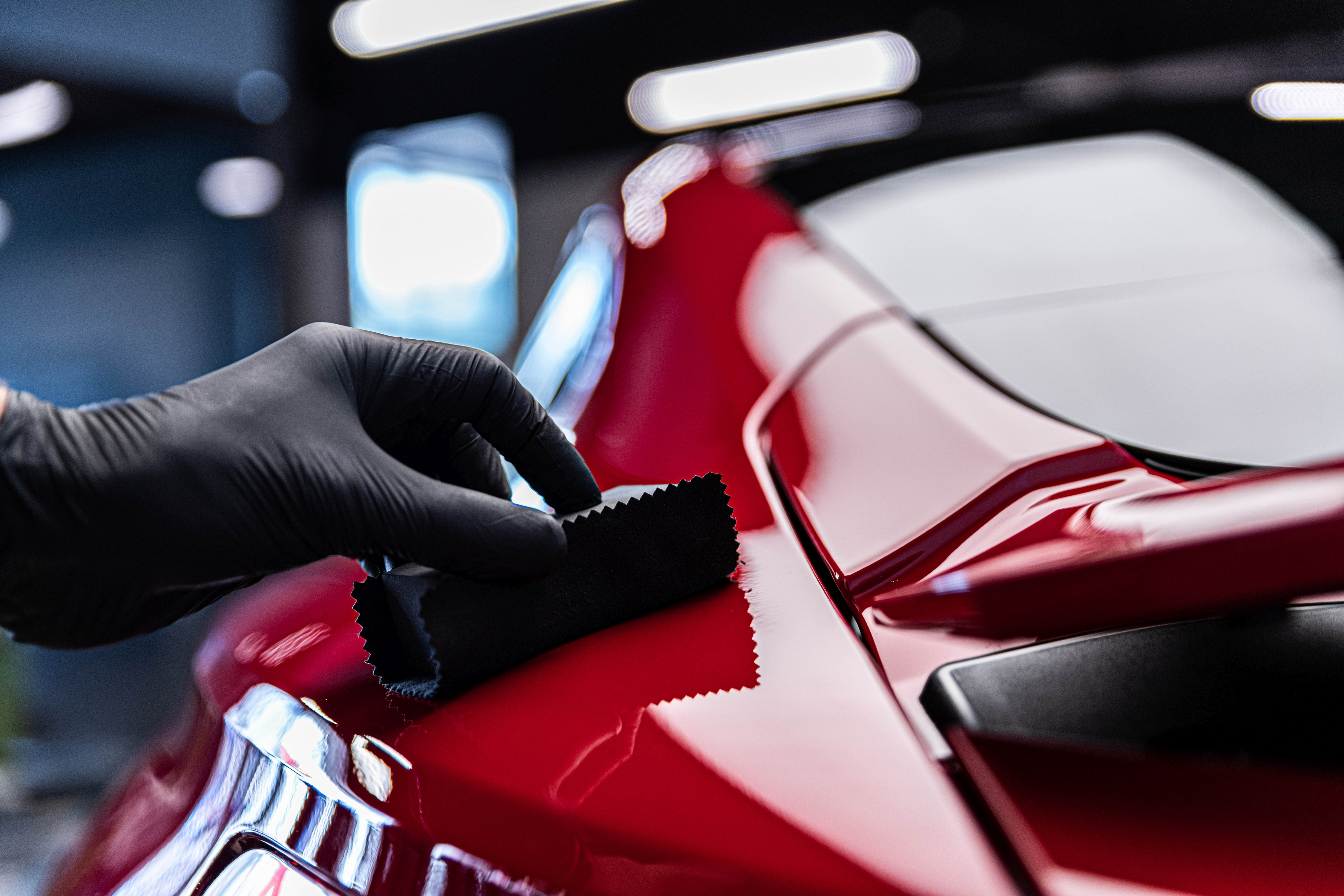Ceramic Coating vs. Typical Wax: Which Uses Better Protection?
The dispute between ceramic covering and conventional wax for car protection is one that advantages careful exam, specifically in terms of toughness, resistance to ecological elements, and total maintenance requirements. While ceramic finishings assure expanded durability and remarkable protection against a variety of hazards, traditional wax might appeal to those seeking a much more affordable, albeit temporary, service.
Introduction of Ceramic Layer
Ceramic finishing has gained considerable popularity among automobile fanatics and professionals alike for its innovative protective high qualities. This innovative remedy includes a liquid polymer that chemically bonds to the automobile's manufacturing facility paint, creating a sturdy layer of protection. Unlike typical wax, which typically lasts for a few weeks to months, ceramic coverings can give lasting protection for numerous years, depending upon the item used and application approach.

While the first expense of ceramic covering may be greater than that of conventional wax, the long-term advantages, including longevity and reduced maintenance regularity, commonly validate the investment. As automotive modern technology remains to advance, ceramic finishes have actually become a favored selection for those seeking optimum defense and long life for their cars.
Overview of Typical Wax
The allure of standard wax depends on its simpleness and convenience of usage, making it a favored choice among cars and truck owners seeking to boost their vehicle's look and offer a standard level of protection. Typically originated from natural carnauba or artificial polymers, conventional wax develops a thin safety layer over the paintwork. The application procedure is uncomplicated, frequently involving a simple rubbing with a microfiber towel, making it accessible to both beginner and skilled individuals.
Conventional wax products are readily available in various formulations, each designed to provide to specific demands, such as enhancing luster or supplying water beading. The flexibility of wax permits use on different surface areas, including paint, glass, and also plastic trim. While the application can be done by hand or equipment, the key is to guarantee a tidy surface for ideal bond.
However, one significant characteristic of conventional wax is its fairly brief life expectancy contrasted to modern-day choices. Normally offering security that lasts from a few weeks to a couple of months, regular reapplication is needed to keep its efficiency. Regardless of these restrictions, conventional wax remains a preferred selection for automobile enthusiasts that appreciate the visual enhancement it provides.
Secret Defense Features
When considering paint defense for automobiles, it's vital to understand the crucial features that identify standard wax from advanced choices like ceramic finishings. One of the primary protective attributes of ceramic coatings is their resilience. Unlike my sources wax, which typically lasts a couple of weeks, ceramic finishings can withstand for numerous years, providing long-term security against environmental pollutants.
Ceramic coverings create a hydrophobic surface, driving away water and preventing dust, gunk, and other particles from sticking to the paint. This function not just improves the lorry's appearance yet additionally decreases the frequency of washing. Furthermore, ceramic finishes offer premium UV security, securing the paint from dangerous sun direct exposure that can result in fading and oxidation.
In comparison, traditional wax supplies an extra temporary barrier versus aspects yet does not have the resistance to scrapes and chemical spots that ceramic coverings supply. While wax can boost gloss, its safety abilities are limited, especially against harsher environmental factors such as bird droppings, tree sap, and road salt. In recap, the essential defense features of ceramic finishings dramatically beat those of conventional wax, making them a remarkable choice for long-lasting vehicle care.
Application Process Contrast

In contrast, the application of ceramic layers is extra time-sensitive and intricate, commonly needing expert aid for ideal results. The car's surface area have to be diligently cleansed, sanitized, and polished to eliminate flaws before the covering is applied.
Eventually, the option in between wax and ceramic coating hinges not only on protection degrees but additionally on the time, expertise, and sources available for their particular applications. - ceramic coating
Cost Evaluation and Durability
Expense plays a considerable role in the decision-making process between typical waxes and ceramic finishes. Ceramic coatings generally regulate a higher ahead of time investment, ranging from $500 to $2,000 depending upon the quality, brand name, and expert application solutions. This initial expense can be credited to the sophisticated technology and materials utilized in ceramic formulas, which provide remarkable longevity and security.
In comparison, standard waxes are a lot more economical, usually costing between $20 to $100 for DIY applications. Nonetheless, the long life of wax items is restricted, try this web-site commonly requiring reapplication every few months to keep their safety high qualities. This recurring cost can accumulate in time, making wax less affordable over time.
Ceramic finishes, while more pricey at first, supply resilient results, commonly exceeding two to five years with appropriate upkeep. This long life can supply substantial savings with time, especially for lorry proprietors that focus on defense and visual conservation - ceramic coating. Inevitably, the choice in between ceramic finishings and conventional waxes must consider both preliminary costs and long-lasting worth, considering the upkeep needs and desired security level for the vehicle
Conclusion
In summary, ceramic coatings give premium security for automobile paint compared to traditional wax, offering improved toughness, resistance to environmental variables, and hydrophobic buildings. While the preliminary investment for ceramic coverings is higher, their longevity and lowered maintenance demands warrant the cost. Ultimately, for those seeking long-lasting auto treatment and defense, ceramic coatings stand for an extra reliable service than traditional wax, which uses only temporary benefits.
The debate between ceramic covering and conventional wax for car defense is one that values careful exam, especially in terms of resilience, resistance to environmental factors, and overall upkeep needs.When considering paint protection for cars, it's vital to comprehend the vital features that differentiate conventional wax from more sophisticated choices like ceramic layers. In summary, the vital protection features of ceramic layers dramatically outshine those of typical More hints wax, making them an exceptional option for long-lasting lorry treatment.
Ultimately, the choice in between ceramic coverings and typical waxes should take into consideration both first expenses and lasting value, factoring in the upkeep demands and wanted defense level for the automobile.
In summary, ceramic finishes supply exceptional security for lorry paint contrasted to typical wax, offering enhanced sturdiness, resistance to ecological aspects, and hydrophobic buildings.